GENEALOGICAL AND CHRONICLE ROLL OF THE BIBLE, in French with a few Latin incipits, ILLUMINATED MANUSCRIPT ON VELLUM [southern Netherlands, c.1440] approx. 375 x 56cms. 5 membranes, lacking between 2 and 3, written in brown ink in a bâtarde script with headings in a gothic bookhand, mostly in two columns between four verticals and numerous horizontals ruled in grey, width of each column approx. 10-12cms, centre double ruling for main line of descent, rubrics in red, some underlining in red, text capitals touched red when written in single column, line endings in red, two-line initials in red or blue, two large initials with staves of burnished gold on divided grounds of pink and blue with white tracery, one very large initial with staves of blue with white tracery on a burnished gold ground with foliate infill, leading to a border of hairline tendrils linking leaves and disks in burnished gold with acanthus sprays in blue, green and red, main line of descent in green where not covered by roundels containing names, TWENTY-NINE TEXT ROUNDELS framed in patterns of blue, green, maroon, pink and ochre each 5.8-8cms in diameter, THREE MINIATURE ROUNDELS each 10.3-13.3cms in diameter, ONE LARGE MINIATURE IN ELABORATE ARCHITECTURAL FRAME c.19 x 23cms (rubbed and worn areas, some staining, cracking and splitting along folds, some small holes, one in large miniature, areas repaired or rebacked). PROVENANCE: From the language and the style of illumination, the roll seems to have been made in the French-speaking area of the southern Netherlands by the scribe J.F. CONTENT: Genealogical and chronicle roll of the Bible, headed Ensieut chy apries le genealogie da la bible translate de latin en franchois qui moustre...seloncq larbre qui le demoustre et ensaigne chy apries , opening In principio creavit deus celum et terram. Cest adonc que au commenchement... , breaking at the end of the second membrane, in the right column after the rubric, Chy apries fait mention de ysaach filz abraham ; resuming with the current third membrane in the left column with the destruction of Jerusalem and the Babylonian Captivity that ended the third age, which had lasted from David; the main line of descent is interrupted between Heber and Abia, some twenty-five generations, probably representing two membranes; ending fourth membrane ...au xxx an il fu baptises de saint jehan baptiste su fleuve jourdain ; colophon Exlicit le bible abregie et figure. J.F. . Explication of the New Testament headed Chy apres fait mention du nouvel testament... , opening De marie mere de Jhesucrist. Le premiere marie fille joachim... ending ...Et vengea le mort jhesucrist. , colophon Et sic est finis . This is not arranged as a genealogical tree -- the tree of the Holy Kindred, the family of the Virgin, has already appeared -- but with each section devoted to the person named in the framed roundel above: the Virgin, Elizabeth, the Apostles including Paul and Matthias, the other two Evangelists and Timothy and Titus, to whom Paul addressed Epistles. At the end, a summary history across both columns takes the story through to the Vengeance of Our Lord: the sacking of Jerusalem by the future Emperor Titus in 70 AD. The Latin text that acted as the basis for the translation of the main section of the roll was a version of the popular Compendium historiae in genealogia Christi by Peter of Poitiers, chancellor of the University of Paris 1193-1205 (see J. Tanis ed., Leaves of Gold, Illumination from Philadelphia Collections , Philadelphia Museum of Art, 2001, pp.196-8). The present text reflects more recent ways of categorising the past by introducing the notion of the Nine Worthies: the three Christian heroes are outside the history's scope but Hector of Troy, Alexander, Julius Caesar and Judas Maccabeus remain in this portion of the text. Peter of Poitiers undoubtedly drew on the Historia scholastica of Peter Comestor, a history which set Biblical events into a wider narrative. Alt
GENEALOGICAL AND CHRONICLE ROLL OF THE BIBLE, in French with a few Latin incipits, ILLUMINATED MANUSCRIPT ON VELLUM [southern Netherlands, c.1440] approx. 375 x 56cms. 5 membranes, lacking between 2 and 3, written in brown ink in a bâtarde script with headings in a gothic bookhand, mostly in two columns between four verticals and numerous horizontals ruled in grey, width of each column approx. 10-12cms, centre double ruling for main line of descent, rubrics in red, some underlining in red, text capitals touched red when written in single column, line endings in red, two-line initials in red or blue, two large initials with staves of burnished gold on divided grounds of pink and blue with white tracery, one very large initial with staves of blue with white tracery on a burnished gold ground with foliate infill, leading to a border of hairline tendrils linking leaves and disks in burnished gold with acanthus sprays in blue, green and red, main line of descent in green where not covered by roundels containing names, TWENTY-NINE TEXT ROUNDELS framed in patterns of blue, green, maroon, pink and ochre each 5.8-8cms in diameter, THREE MINIATURE ROUNDELS each 10.3-13.3cms in diameter, ONE LARGE MINIATURE IN ELABORATE ARCHITECTURAL FRAME c.19 x 23cms (rubbed and worn areas, some staining, cracking and splitting along folds, some small holes, one in large miniature, areas repaired or rebacked). PROVENANCE: From the language and the style of illumination, the roll seems to have been made in the French-speaking area of the southern Netherlands by the scribe J.F. CONTENT: Genealogical and chronicle roll of the Bible, headed Ensieut chy apries le genealogie da la bible translate de latin en franchois qui moustre...seloncq larbre qui le demoustre et ensaigne chy apries , opening In principio creavit deus celum et terram. Cest adonc que au commenchement... , breaking at the end of the second membrane, in the right column after the rubric, Chy apries fait mention de ysaach filz abraham ; resuming with the current third membrane in the left column with the destruction of Jerusalem and the Babylonian Captivity that ended the third age, which had lasted from David; the main line of descent is interrupted between Heber and Abia, some twenty-five generations, probably representing two membranes; ending fourth membrane ...au xxx an il fu baptises de saint jehan baptiste su fleuve jourdain ; colophon Exlicit le bible abregie et figure. J.F. . Explication of the New Testament headed Chy apres fait mention du nouvel testament... , opening De marie mere de Jhesucrist. Le premiere marie fille joachim... ending ...Et vengea le mort jhesucrist. , colophon Et sic est finis . This is not arranged as a genealogical tree -- the tree of the Holy Kindred, the family of the Virgin, has already appeared -- but with each section devoted to the person named in the framed roundel above: the Virgin, Elizabeth, the Apostles including Paul and Matthias, the other two Evangelists and Timothy and Titus, to whom Paul addressed Epistles. At the end, a summary history across both columns takes the story through to the Vengeance of Our Lord: the sacking of Jerusalem by the future Emperor Titus in 70 AD. The Latin text that acted as the basis for the translation of the main section of the roll was a version of the popular Compendium historiae in genealogia Christi by Peter of Poitiers, chancellor of the University of Paris 1193-1205 (see J. Tanis ed., Leaves of Gold, Illumination from Philadelphia Collections , Philadelphia Museum of Art, 2001, pp.196-8). The present text reflects more recent ways of categorising the past by introducing the notion of the Nine Worthies: the three Christian heroes are outside the history's scope but Hector of Troy, Alexander, Julius Caesar and Judas Maccabeus remain in this portion of the text. Peter of Poitiers undoubtedly drew on the Historia scholastica of Peter Comestor, a history which set Biblical events into a wider narrative. Alt
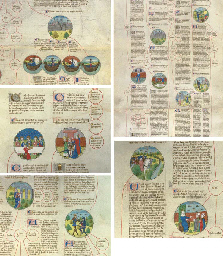

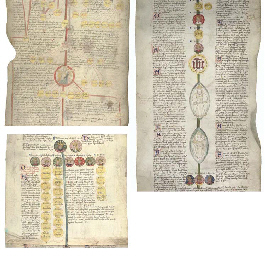
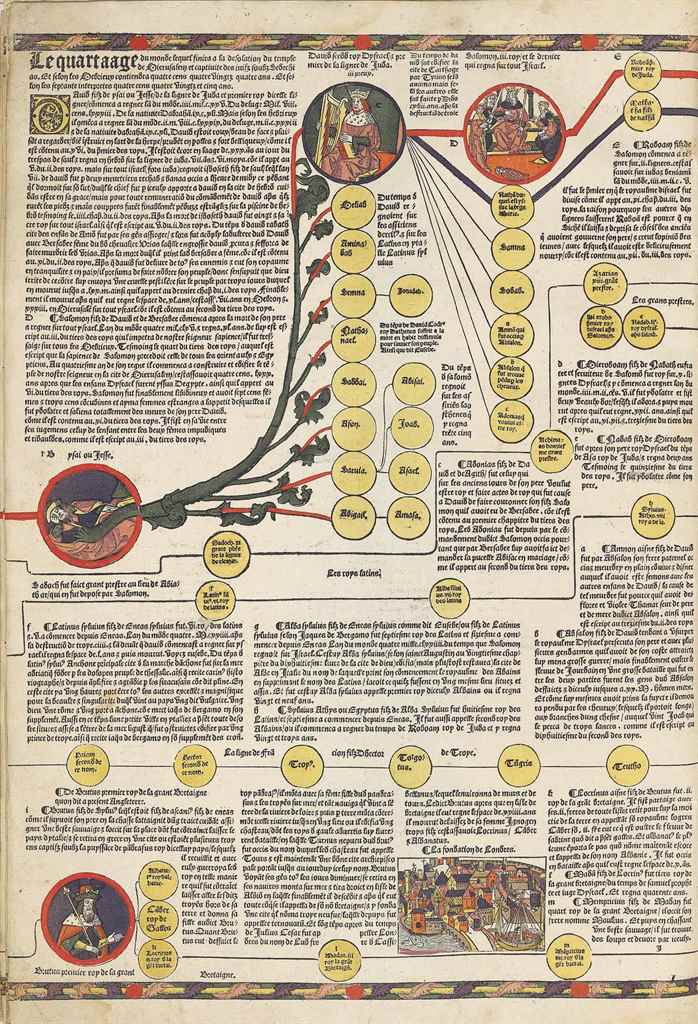

.jpg)
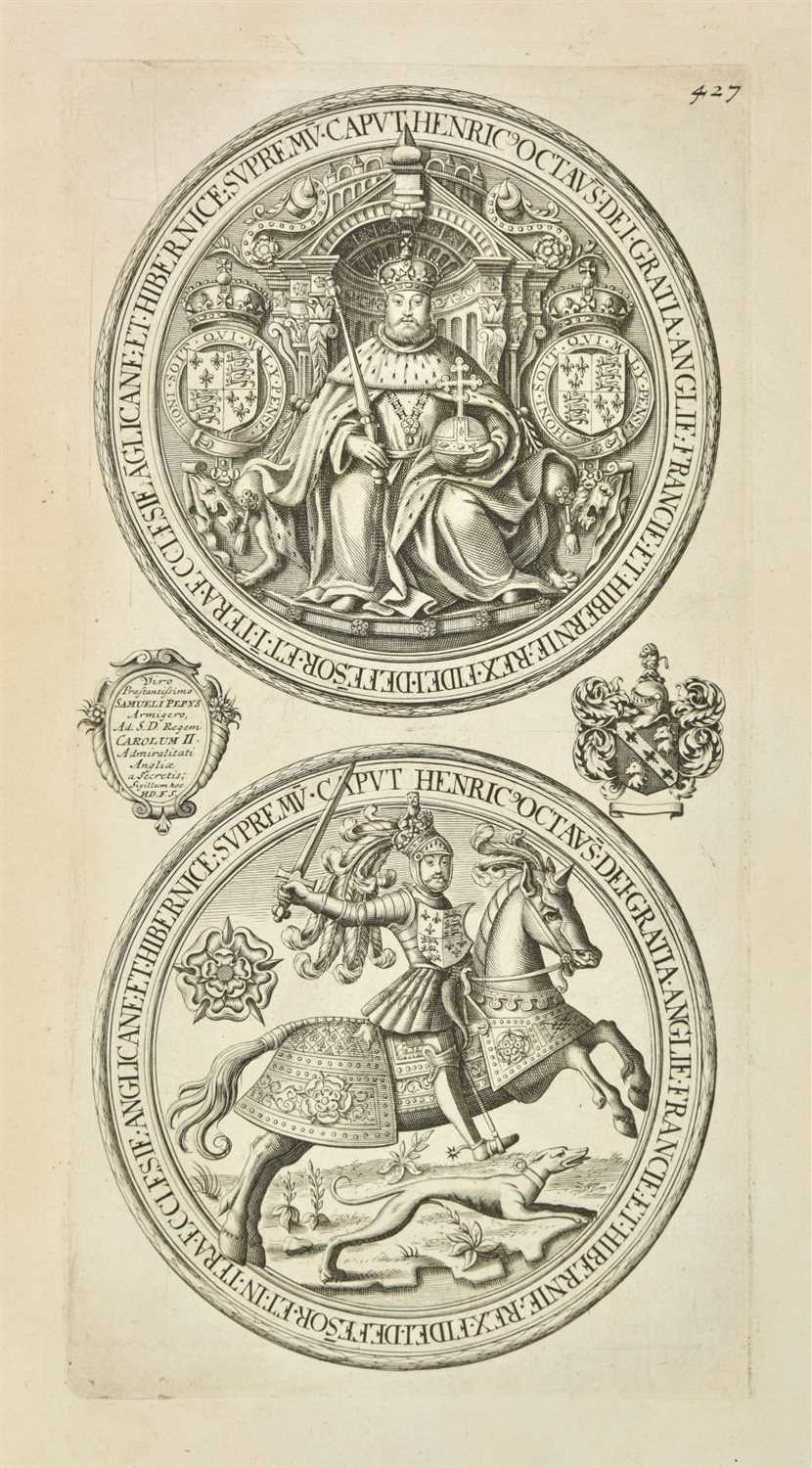
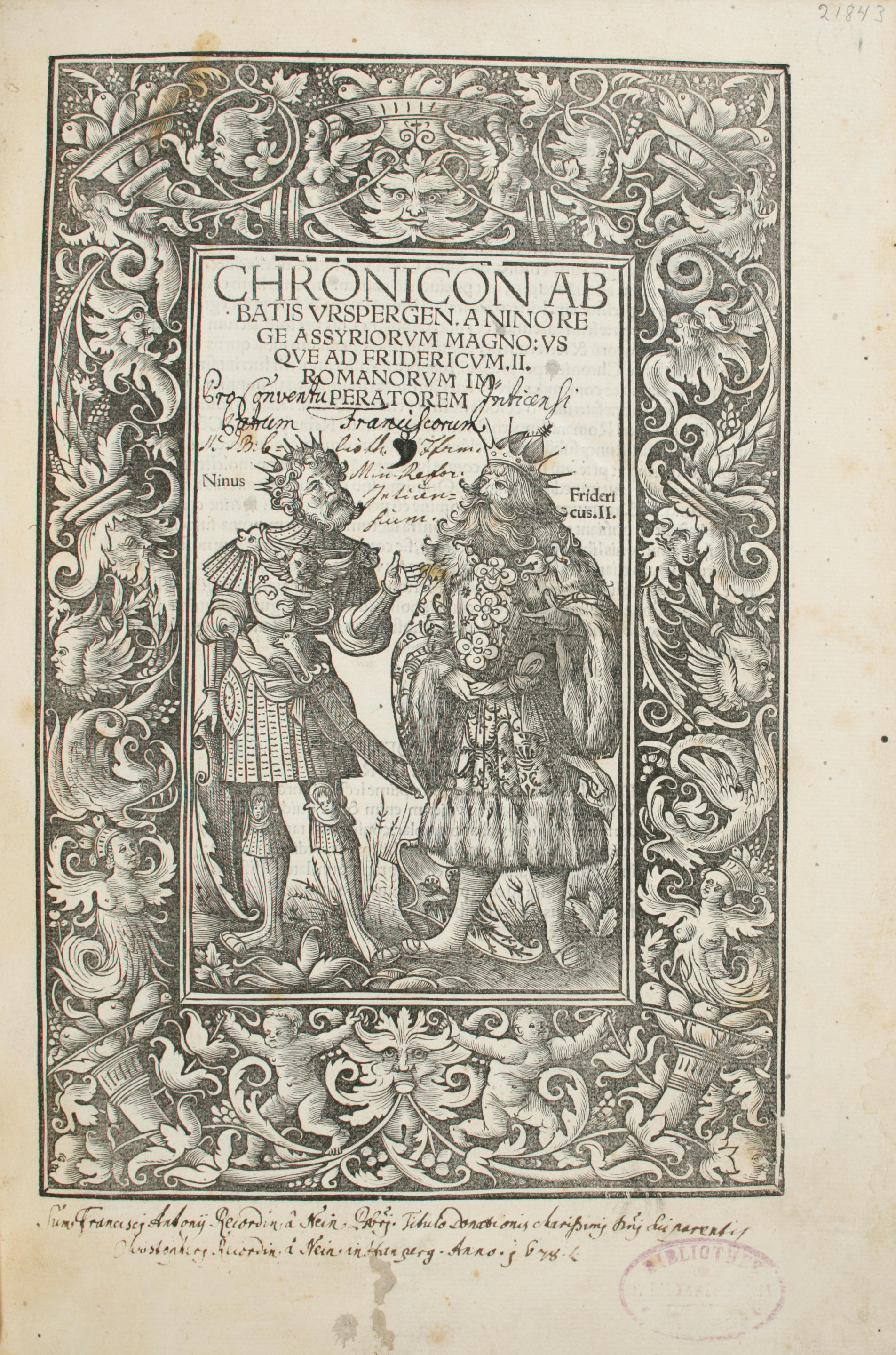
Testen Sie LotSearch und seine Premium-Features 7 Tage - ohne Kosten!
Lassen Sie sich automatisch über neue Objekte in kommenden Auktionen benachrichtigen.
Suchauftrag anlegen